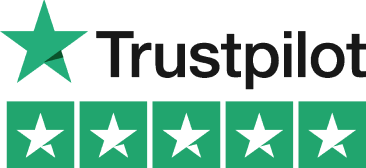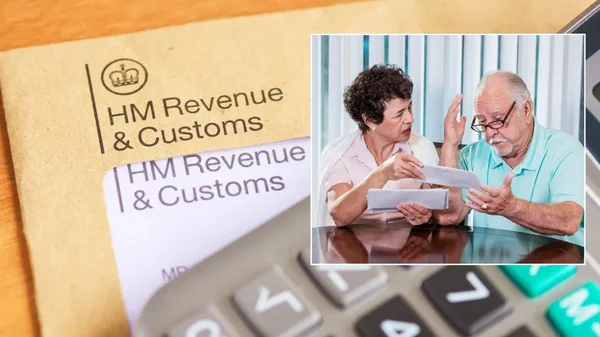Let’s Break This Down Together...
VAT is going digital, and it’s easy to feel overwhelmed. Do you need special software? What does it cost?
This guide walks you through everything, from choosing HMRC-approved software to setting it up step by step. We also compare features and pricing so you can find the right fit for your business.
By the end, you’ll know exactly what to do and which tools to use to stay compliant and stress-free. Let’s dive in.
The main goal is reducing tax errors that cost the Treasury billions each year. Digital records and automatic calculations mean fewer mistakes and a more accurate tax system. To avoid penalties, it is important to understand your VAT right and obligations under MTD regulations.
What is Making Tax Digital for VAT?
MTD for VAT is HMRC’s initiative to modernise the tax system. It requires all VAT-registered businesses to keep digital records and submit returns using MTD-compatible software. This section provides general guidance and should not be considered a substitute for personalised tax advice.
The rollout began in April 2019 for businesses with turnover above the VAT threshold (£85,000). Since April 2022, all VAT-registered businesses, including sole traders, must comply, regardless of turnover.
The main goal is reducing tax errors that cost the Treasury billions each year. Digital records and automatic calculations mean fewer mistakes and a more accurate tax system. To avoid penalties, it is important to understand your VAT right and obligations under MTD regulations.
Benefits of Making Tax Digital
Making Tax Digital (MTD) brings a host of advantages for VAT registered businesses looking to streamline their tax processes. By adopting MTD compatible software, businesses can simplify their VAT submissions and reduce the risk of costly errors. Automation of VAT calculations and digital record keeping means less manual work and fewer mistakes, helping businesses stay compliant with HMRC requirements.
One of the standout benefits is improved visibility into key financial metrics. With real-time data at your fingertips, you can make more informed decisions and monitor your business performance more closely. MTD compatible software also helps businesses stay on top of their VAT obligations, reducing the risk of non-compliance and potential penalties.
Ultimately, making tax digital is about more than just meeting legal requirements, it’s about making your business more efficient, accurate, and future-ready. Whether you’re a sole trader or a growing company, embracing Making Tax Digital MTD can help you save time, improve accuracy, and focus on what matters most: running your business.
What Exactly is HMRC Digital VAT Software?
HMRC digital VAT software refers to any accounting system compatible with Making Tax Digital requirements. These solutions are considered a software product designed for digital VAT compliance and connect directly to HMRC via a secure API.
Unlike the old days of manually entering figures on the HMRC website, MTD software sends your return data directly from your digital records to HMRC’s systems. HMRC requires functional compatible software capable of recording, preserving, and submitting VAT data.
HMRC doesn’t provide its own software; instead, they’ve approved hundreds of commercial options ranging from basic to comprehensive accounting packages. It is important to choose VAT compatible software to ensure your VAT returns are submitted accurately and in compliance with MTD regulations.
The software must maintain digital records of your sales and purchases. It must also calculate your VAT liability and connect to HMRC’s systems for direct submission. To ensure compliance with HMRC regulations, you need tax digital compatible software that can maintain digital records, transfer data electronically, and submit tax returns directly to HMRC.

Key Features to Look For in MTD Software
When choosing your MTD software, make sure it can handle digital record-keeping for all your VAT transactions. Bookkeeping software is a common solution for this, as it streamlines the process and helps maintain accurate records. This is a core requirement of the MTD rules.
Look for automatic tax calculations to reduce human error. Good software will work out your VAT liability based on your digital records. The ability to reconcile bank transactions is also a valuable feature, simplifying financial tracking and reporting.
Check that the software can submit returns directly to HMRC through their API. This direct connection is essential for MTD compliance. Real-time data access also allows you to monitor cash flow, outstanding invoices, and bills due, helping you manage your short-term financial health.
If you use multiple systems, ensure they can create proper “digital links” between them, ensuring that data transferred between systems is electronic and automated. Copying and pasting data no longer meets HMRC requirements.
Time-Saving Automation in MTD Software
One of the biggest advantages of using MTD software is the automation it brings to your tax processes. Modern accounting software, such as Xero or Sage, can automatically calculate your VAT, generate VAT returns, and keep your digital records up to date, all with minimal manual input. This not only saves time but also reduces the risk of human error.
For businesses that prefer working with spreadsheets, bridging software offers a practical solution. You can continue using Microsoft Excel to manage your VAT figures, then use bridging software to import your data and submit your VAT returns directly to HMRC. This seamless integration means you don’t have to change your existing processes to stay compliant.
By automating routine tasks and ensuring accurate data transfer, MTD software allows businesses to focus on growth and core activities, rather than getting bogged down in paperwork. The result is a more efficient, reliable, and stress-free approach to VAT compliance.
Types of MTD Software Available
Full accounting packages like Xero, QuickBooks and Sage offer comprehensive solutions. These handle bookkeeping, invoicing and VAT submissions all in one place.
Bridging software provides a simpler option if you prefer to keep records in spreadsheets. These tools connect your Excel files to HMRC’s system. Bridging tools can also help transfer VAT data from other accounting software that may not be MTD-compatible, allowing you to submit returns without changing your existing system.
Free and low-cost options exist for smaller businesses with straightforward VAT needs. Always check they’re on HMRC’s approved list before committing. Industry-specific software caters to sectors with unique VAT requirements. These include construction, retail and hospitality businesses with special VAT rules.

Agent Services and MTD
For many businesses, working with an agent can make the transition to Making Tax Digital much smoother. Agents are equipped to help you set up MTD compatible software, manage your digital record keeping, and submit VAT returns on your behalf. By creating an agent services account, agents can securely access your VAT records and handle your MTD obligations directly with HMRC.
This partnership not only ensures that your VAT returns are submitted accurately and on time, but also provides peace of mind that you’re meeting all compliance requirements. Agents can offer expert guidance on choosing the right software, maintaining digital records, and navigating any challenges that arise with MTD.
Whether you’re new to digital tax or simply want to save time, leveraging agent services can help your business stay compliant and efficient, allowing you to focus on what you do best.
Digital Links and MTD Compliance
Digital links are a cornerstone of MTD compliance, ensuring that data flows seamlessly and accurately between your software systems. HMRC requires that all data transfers, from your digital records to your VAT return submission, are handled electronically, without manual copying or retyping.
Compatible software can establish digital links in several ways, such as through API connections, importing data via XML or CSV files, or using spreadsheet formulas that connect directly to your accounting system. These digital links help maintain data integrity, reduce errors, and support a fully compliant MTD process.
For businesses, understanding and implementing digital links is essential. By using software that supports these connections, you can ensure your data is transferred securely and efficiently, keeping your VAT submissions accurate and your business on the right side of HMRC regulations.
Setting Up Your MTD Software
First, create or access your Government Gateway account. You’ll need this to sign up for MTD for VAT through your Business Tax Account. A government gateway user must use their government gateway user id and user id and password to authenticate.
Next, choose and set up your MTD-compatible software. Make sure it appears on HMRC’s list of approved software providers. MTD VAT software enables you to submit VAT returns digitally in compliance with MTD regulations.
Connect your software to HMRC by following the authorisation process. This creates the secure link needed for submitting returns. You will need to grant authority to the software to communicate with HMRC. Agent signing may be required if an agent is submitting on behalf of the business.
Finally, set up your digital record-keeping system. This means recording all VAT transactions digitally from the start of your first accounting period under MTD.

MTD Compliance Timeline
Staying on top of the MTD compliance timeline is essential for all VAT registered businesses. Since April 2019, most VAT registered businesses with a taxable turnover above £85,000 have been required to keep digital records and submit VAT returns using MTD compatible software. From April 2022, this requirement extended to all VAT registered businesses, regardless of turnover.
Looking ahead, the scope of Making Tax Digital is expanding. From April 2026, businesses, self-employed individuals, and landlords with income above £50,000 will need to comply with MTD for Income Tax Self Assessment. This means keeping digital records and submitting returns using MTD compatible software for income tax as well.
By understanding these key dates and planning ahead, businesses can ensure a smooth transition to digital tax submissions. Staying informed about the MTD compliance timeline helps you avoid penalties, maintain accurate digital records, and keep your business fully compliant with HMRC’s evolving requirements.
Common MTD Software Challenges
Integration issues often arise when connecting new MTD software with existing business systems. Test the integration before your first submission deadline. Errors in integration can lead to incorrect figures on your tax return, potentially causing compliance issues with HMRC.
Digital linking requirements can be tricky to understand. Remember that data must flow digitally between systems without manual retyping. Special VAT schemes need software that can handle specific calculations. This includes the flat rate scheme, margin scheme or partial exemption.
I once helped a client who’d been manually copying data between systems for months. They were shocked to learn this breached MTD rules, despite using approved software. If you spot errors after submission, most software allows for corrections. Just be aware of HMRC’s rules about how and when to correct mistakes. Timely and accurate tax returns are essential for staying compliant and avoiding penalties.
Looking ahead, Making Tax Digital is expanding beyond VAT. Businesses will soon need to comply with digital for income tax and tax digital for income requirements, especially sole traders and landlords from April 2026.
Corporation tax will also be brought into MTD, requiring digital record-keeping and MTD-compatible software for digital submissions, although the exact deadline is yet to be confirmed. Staying updated and ensuring your systems are ready for these changes is crucial for future compliance.
Final Thoughts
Making Tax Digital for VAT marks a significant shift in how businesses handle their tax obligations. While the transition might feel challenging, the right software makes compliance straightforward.
Most businesses find that after the initial setup, digital VAT systems actually save time. The automatic calculations and direct submissions cut down on manual work and reduce errors. As HMRC continues to expand Making Tax Digital to other taxes, getting comfortable with digital











